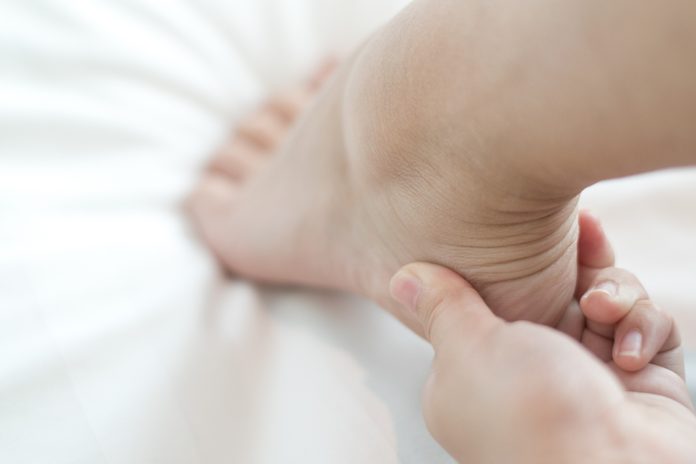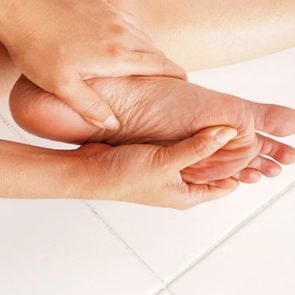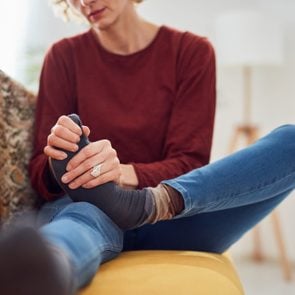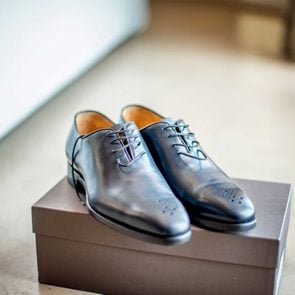What to Know About Heel Spur Symptoms, Causes, and Treatments
Updated: Mar. 30, 2021
Heel spurs often happen along with plantar fasciitis and may be the reason for your heel pain.
On This Page
Understanding heel spurs
If you have stabbing pain or an uncomfortable throb on the bottom of your heel, you’re probably desperate for answers. It sure isn’t fun to get shooting spasms when you walk.
There are a variety of reasons you may be experiencing pain on the bottom of your foot. One of those: heel spurs.
Although heel spurs are a common type of foot problem, they aren’t always painful. One out of 10 people has heel spurs, according to the American Academy of Orthopaedic Surgeons. But only one out of 20 people with heel spurs actually has foot pain.
Here’s the scoop on what causes these common foot issues, how to prevent them, and how to treat heel spur symptoms.
What is a heel spur?
Heel spurs are small, bony growths of calcium deposits that collect on the heel.
Sometimes a heel spur develops on the bottom of the heel on the heel bone (called the calcaneus). That’s where the plantar fascia ligament attaches to your heel from your toes.
The plantar fascia is a band of fibrous connective tissue that runs along the bottom of your foot. It keeps your foot bones shaped like an arch.
A heel spur can also form on the back of your heel in the spot where your Achilles tendon is connected to your heel bone. If a nerve is trapped in the bony growth, that can trigger swelling and pain.
(Find out if toe separators help with foot pain.)
Causes of heel spurs
The plantar fascia works as a shock absorber. It withstands daily walking, standing, and exercise. The stretchy ligament also supports the arch of the foot.
But this tissue can be aggravated when it’s stretched too much and too long from overuse. As the plantar fascia pulls on the heel bone, it can cause pain and inflammation, resulting in a condition called plantar fasciitis. (These are the plantar fasciitis symptoms you should know.)
The body eventually might respond to this stress by building extra bone. This is a heel spur.
Plantar fasciitis is sometimes called heel spur syndrome when a spur is present, according to the American College of Foot and Ankle Surgeons.
Some of the things that can contribute to heel spur syndrome:
- Wearing unsupportive footwear
- Exercise that puts stress on the heel, such as running or jumping
- Extra body weight
- Foot anatomy like high arches or flat feet
- Advanced age
- Activities that require lots of walking or standing
(These are the horrible things high heels do to your body.)
Heel spur signs and symptoms
You may not have any pain or other symptoms with a heel spur.
If you do have symptoms, you might have pain on the bottom of your heel. You also might be able to feel a bump when you touch the bottom of your heel.
If you feel pain, it’s usually caused by inflammation in the area, not by the spur itself.
Pain is usually worse when you are walking, jogging, or running, or whenever you are putting weight on your feet.
(Psst, here are some foot health secrets to know.)
Diagnosing heel spurs
If you have pain on the bottom of your heel, see a doctor. Diagnosis often starts with a physical exam. From there, your doctor will most likely order an X-ray to look for the bony protrusion and rule out other causes of heel pain.
Ways to treat heel spur syndrome
Most treatments for heel spurs focus on addressing plantar fasciitis, which is typically the underlying cause, and making lifestyle changes.
Rest
Cut down on exercise and other activities that put stress on your heel to give your feet some time off.
(Find out if walking barefoot is bad for your feet.)
Ice
Put an ice pack on your heel for 20 minutes several times a day to ease inflammation. Don’t apply ice directly to your skin, though. That can damage your skin. Instead, wrap the ice pack in a towel.
(Cold vs. heat for pain: Which is better?)
Stretching exercises
Stretch and massage the foot, Achilles tendon, and calf muscle before and after activity. It may also help to roll a frozen water bottle under your foot.
Your doctor might suggest physical therapy so you can learn the correct exercises to stretch and strengthen your feet.
You can also wear a night splint to keep your foot flexed and to stretch your plantar fascia and calf muscles while you sleep.
Pain medication
Over-the-counter pain medication, including nonsteroidal anti-inflammatory drugs (NSAIDs) such as ibuprofen (Advil, Motrin) and naproxen (Aleve), may help with pain and swelling.
Shoes and orthotics
Buying better-fitting shoes may help relieve structural issues and lessen pain. Look for shoes with a supportive heel cup, a flexible front, and a slightly elevated heel.
Orthotics slip into your shoes to provide extra support and help prevent injury. They’re especially useful for people with flat feet or high arches. You can buy these over the counter, or your podiatrist can make custom orthotics that are designed specifically for your feet.
(These are the shoe mistakes that hurt your feet.)
Steroid injections
When delivered to the most inflamed part of the heel, cortisone injections (aka corticosteroid medication) can help relieve pain and inflammation. These shots help quickly, and the effects usually last for about a month. There’s a limit to how often you can receive these injections, and they can be hard to administer in the heel.
(This is why you might have pain in the ball of the foot and top of the foot.)
Surgery
According to the American Academy of Orthopaedic Surgeons, more than 90 percent of patients with plantar fasciitis will improve within 10 months of beginning simple lifestyle treatments.
Doctors will only recommend surgery for severe cases, and that’s typically after a year of aggressive treatment.
There are several types of surgery. For instance, the surgeon may cut part of the fascia to ease tension and then remove the extra bone heel spur. Or a surgeon might lengthen the calf muscle to take stress off the plantar fascia.
Products
- 9 Best Shoes for Heel Pain, According to Podiatrists
- 10 Best Flip-Flops with Arch Support, According to Podiatrists
- 8 Best Shoes for Plantar Fasciitis
Prevention
By taking steps to avoid plantar fasciitis, you can reduce your chances of developing heel spurs. Wear shoes with good arch support and cushioning in the heel. Stretch daily, especially before you work out. Because being overweight or obese contributes to heel spur syndrome, maintaining a healthy weight can help.




